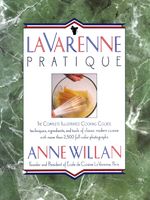Advertisement
Univalves
Appears in
By Anne Willan
Published 1989
Univalves are as much a gastronomic curiosity as a delicacy. Because they are hard to extract from the shells while alive, all but the largest abalone and conch must be cooked before shelling. The smallest—shiny black winkles or periwinkles — have an agreeable iodine taste but require patience to eat.
Whelks are more generous, growing as large as 6 in/15 cm long, with a good portion of rich meat in the larger shells. Top shells, which resemble a toy spinning top, are edible too, as are hornshells, which contain meat that can be extracted easily from the long pointed shell. The southern European spike-shelled murex appears on the table, but is more famous as the source of Tyrian purple, the royal dye of antiquity. Conical limpet shells are a familiar sight on rocky beaches. Both can be eaten raw, but they tend to be tough and neither is worth marketing.

